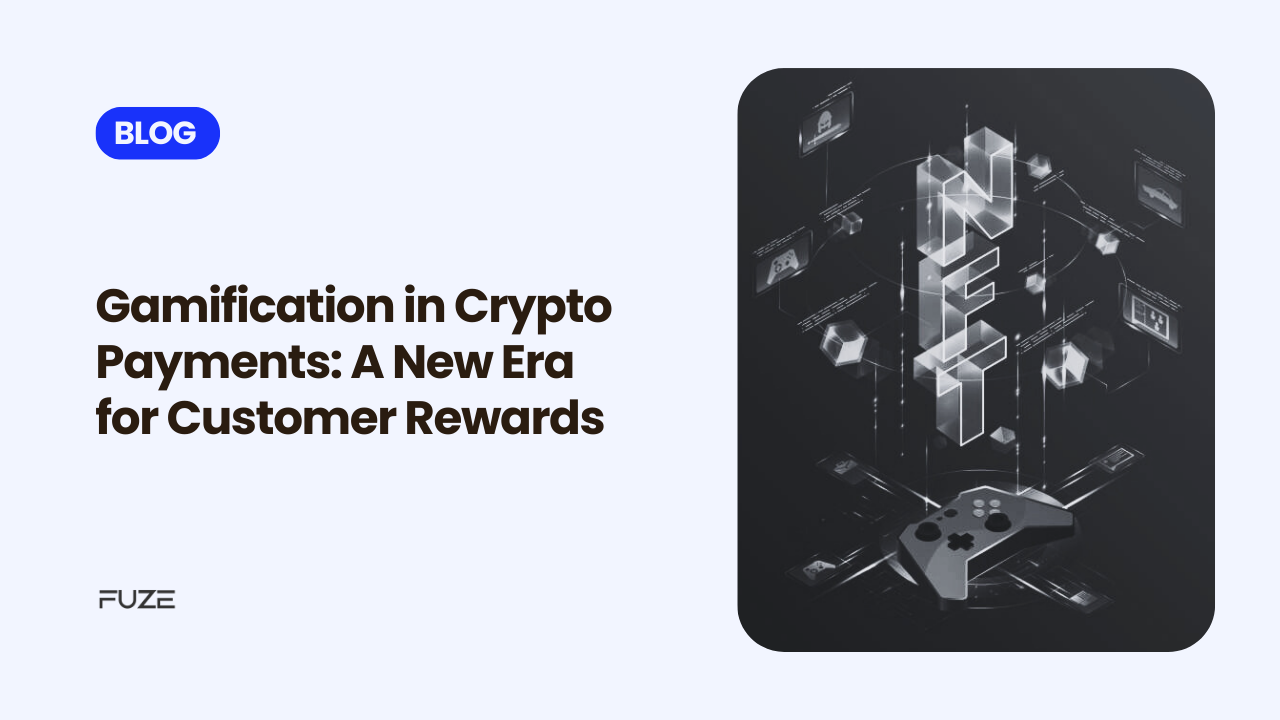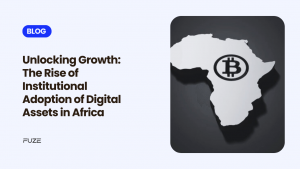As digital payments evolve, crypto payment platforms are pioneering a transformative approach by integrating gamification into their systems. Gamification, the application of game-like mechanics in non-game contexts, has already proven its effectiveness in enhancing user engagement and brand loyalty. When combined with blockchain technology, it offers a novel way to engage users through token rewards, NFTs, and interactive payment experiences.
In this blog, we explore how gamification is influencing crypto payments, the role of blockchain in enabling these features, and how businesses can leverage this trend to drive customer loyalty and growth.
The Rise of Gamification in Payments
Traditionally, in finance, gamification has largely been driven by loyalty programs, cashback, and points-based systems. Crypto payment platforms take these ideas to the next level through blockchain-based tokens, smart contracts, and NFTs in creating seamless, decentralized, and rewarding ecosystems.
Key drivers for this change are:
Increased Customer Engagement: Gamified rewards tend to encourage users to return to the platform frequently and increase transaction volumes.
Appeal to Millennials and Gen Z: Digitally native generations are attracted to innovative and engaging payment systems.
Blockchain Transparency: The inherent transparency of blockchain makes reward systems more trustworthy, appealing to customers who are wary of opaque traditional loyalty programs.
How Gamification Works in Crypto Payments
- Tokenized Rewards
Crypto platforms often issue native tokens as rewards for user activities, such as making purchases, staking, or referring friends. These tokens can be traded, staked for additional benefits, or redeemed for goods and services.
Example: A crypto payment platform may offer a user 5% of their transaction value as tokens, which they can later convert to fiat or use within the platform. - NFT-Based Rewards
Non-Fungible Tokens (NFTs) bring uniqueness to rewards. Platforms might issue collectible NFTs for milestones achieved, which users can trade or showcase.
Example: Completing 100 transactions might earn a user a limited-edition NFT, serving both as a badge of honor and a tradable asset. - Interactive Challenges and Tiers
Platforms introduce challenges like transaction streaks or volume-based rewards to motivate users. Progression through reward tiers provides increasingly valuable perks.
Example: A customer who spends over $10,000 in a month might unlock premium support or exclusive NFTs. - Play-to-Earn Models
Payment platforms can incorporate play-to-earn elements, where users earn crypto rewards by participating in games integrated into the platform.
Example: Users might play a mini-game post-payment to win cashback in crypto.
Advantages of Gamification for Businesses
- Increased Customer Engagement: Gamification makes the whole process of payments more interesting. Businesses can engage the attention and maintain the interest of customers with rewards or collectibles.
- Building Brand Loyalty: Reward systems foster a sense of achievement and satisfaction, encouraging users to stick with a specific platform. Loyal customers are more likely to recommend the service to others.
- Driving Crypto Adoption: Gamified rewards demystify crypto for newcomers by providing accessible entry points. Tokens and NFTs serve as hands-on experiences for understanding digital assets.
- Boosting Transaction Volumes: By incentivizing frequent usage, gamification encourages users to transact more often, leading to higher transaction volumes for businesses.
- Strengthening Community Ties: Leaderboards, challenges, and exclusive NFTs create a sense of community among users, fostering collaboration and shared excitement around the platform.
Blockchain’s Role in Enabling Gamification
Blockchain technology underpins the success of gamification in crypto payments by:
- Ensuring Transparency: Users can track their rewards on-chain, eliminating concerns about unfair practices.
- Enhancing Security: The decentralized nature of blockchain ensures the safety of user rewards and data.
- Providing Interoperability: Rewards and NFTs can be used across multiple platforms, increasing their value to users.
How Businesses Can Leverage Gamification
1. Collaborate with Crypto Payment Platforms
Partner with platforms that integrate gamification features like token rewards or NFTs. These collaborations can help businesses stand out in competitive markets.
2. Design Exclusive Rewards
Businesses can create branded tokens or NFTs tailored to their audience. For instance, a coffee chain could issue digital collectibles redeemable for free beverages.
3. Educate Customers
Provide resources to help customers understand the value of rewards, tokens, and NFTs. This step is crucial for converting non-crypto users.
4. Monitor and Optimize
Track user engagement metrics to identify which gamification elements are most effective. Optimize the system based on feedback and data.
Successful Gamification Models in Crypto Payments
Several crypto payment platforms are leading the charge in gamification:
- Crypto.com: Known for its robust ecosystem, Crypto.com offers tokenized cashback on transactions and gamified staking rewards through its native CRO token.
- Fold: Fold App turns everyday spending into a game by offering users “spins” that reward Bitcoin cashback for using their payment cards.
- Lolli: This platform gamifies online shopping by offering Bitcoin rewards for purchases at partner stores, effectively making crypto earning fun and interactive.
Challenges in Gamifying Crypto Payments
While the opportunities are vast, businesses must navigate several challenges:
- Regulatory Concerns: Token rewards and NFTs must comply with evolving legal frameworks, especially in jurisdictions with strict crypto regulations.
- User Education: Many users are still unfamiliar with blockchain and NFTs, requiring platforms to invest in education and onboarding.
- Technical Complexity: Building and maintaining gamified systems requires significant technical expertise and resources.
The Future of Gamification in Crypto Payments
Gamification is transforming the way we think about payments, especially in the evolving world of cryptocurrency. By weaving engaging, game-like experiences into transactions, crypto platforms are not just enhancing user experience but also accelerating the adoption of digital currencies. Tokens, NFTs, and tier-based incentives create value for customers and build more significant loyalty relationships.
With blockchain offering transparency and security as a foundation for such systems, gamified payments are set to become the core of the digital economy. As this trend gains momentum, businesses that embrace gamification in their payment systems will find themselves at the forefront of customer engagement and growth, paving the way for a future where payments are not only seamless but also fun and rewarding. The intersection of crypto and gamification isn’t just a passing trend—it’s the future of commerce.
Disclaimer: Virtual assets carry significant risks, including high volatility and potential loss of your entire investment. They are not backed by governmental protections, and recourse may be limited in case of loss. Always assess your risk tolerance, fully understand the risks, and seek independent financial advice if needed before investing.
Frequently Asked Questions
- Can gamification help with crypto adoption?
Yes, gamification lowers barriers to entry by making crypto usage more engaging and accessible. Users who might otherwise be hesitant to use cryptocurrencies can learn and interact with digital assets in a fun and rewarding way. - Which industries are adopting gamified crypto payments?
Industries like retail, e-commerce, gaming, and travel are early adopters. These sectors use gamified rewards to engage tech-savvy customers and incentivize spending through interactive programs. - What are the challenges of implementing gamification in crypto payments?
Key challenges include navigating regulatory compliance, educating users unfamiliar with crypto or blockchain, and managing the technical complexity of integrating gamified systems into payment platforms. - How does blockchain technology enable gamification?
Blockchain provides transparency, security, and decentralization, ensuring rewards and incentives are traceable and trustworthy. Smart contracts automate the issuance and management of rewards, enhancing efficiency. - What is the future of gamification in crypto payments?As blockchain and Web3 technologies evolve, gamification is expected to become a core component of crypto payment platforms. Businesses will likely leverage gamification to drive engagement, increase adoption, and create immersive customer experiences.







